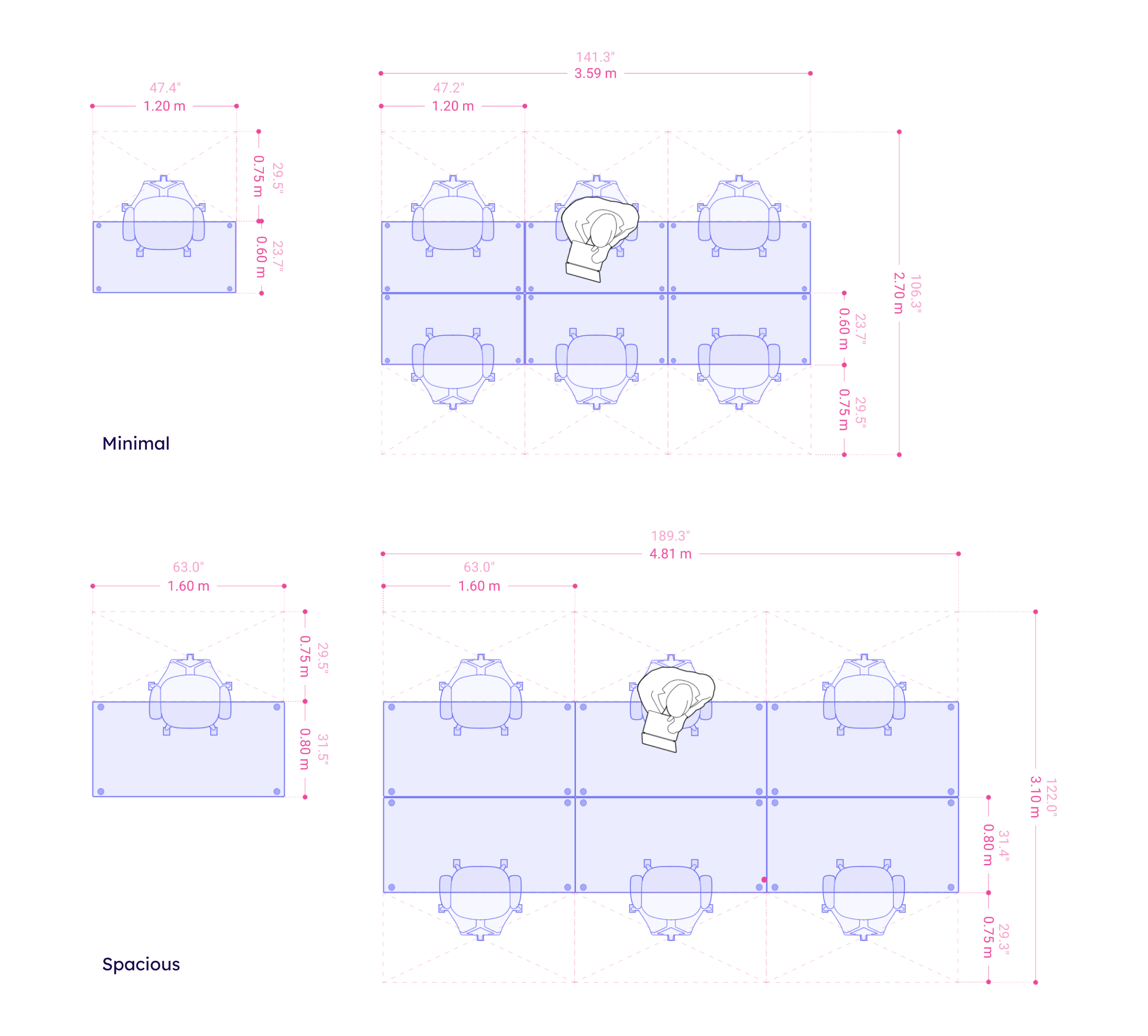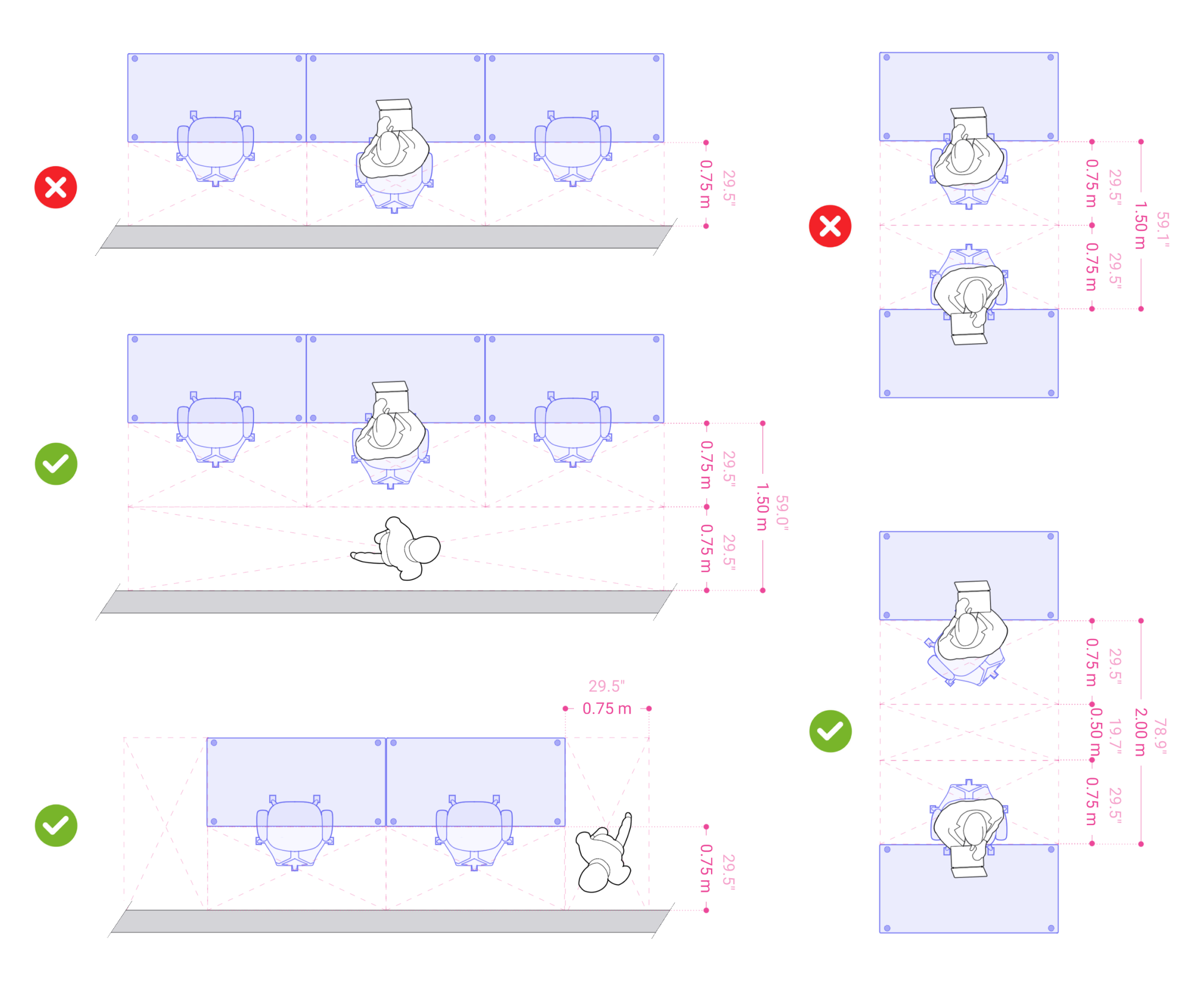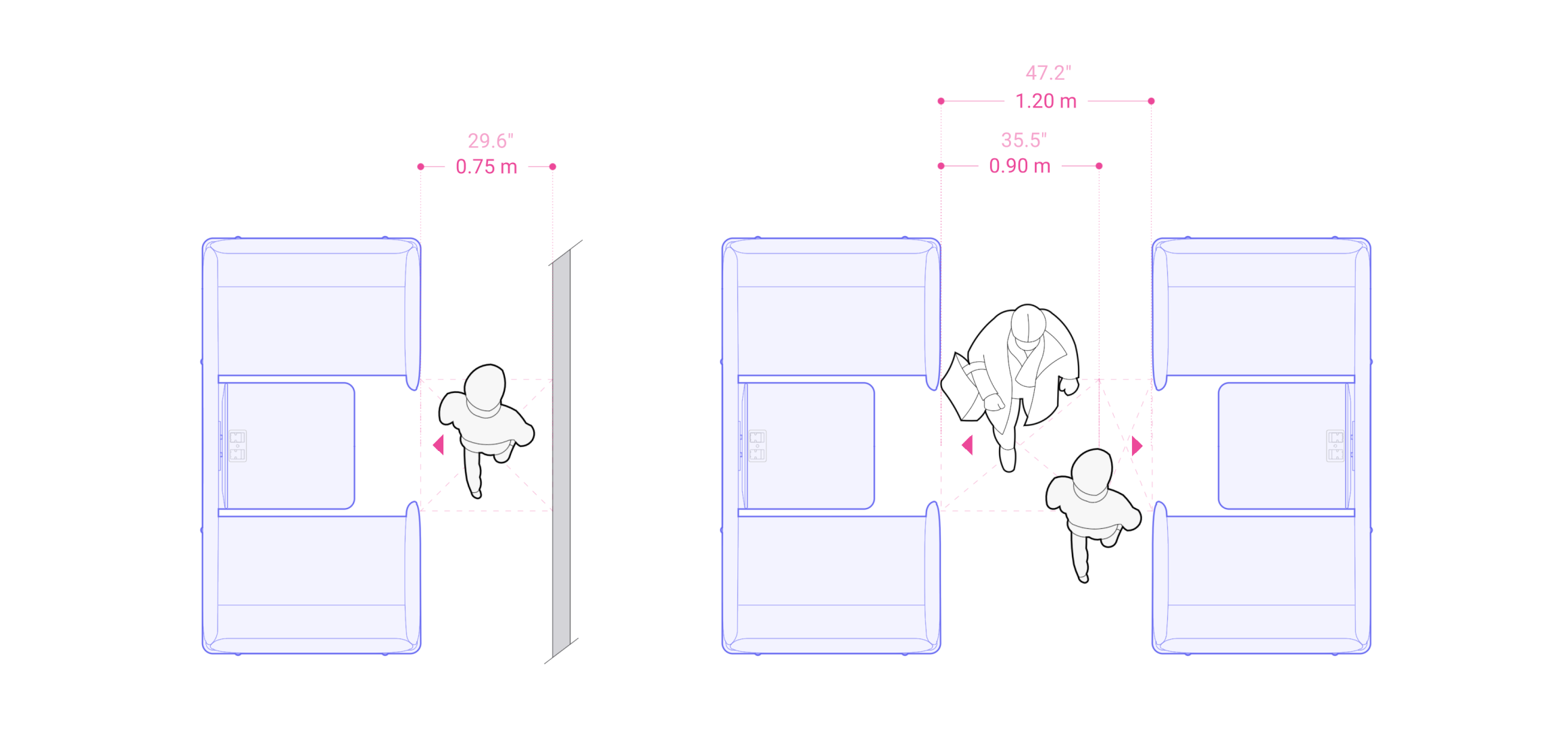Everything about designing an open space office layout
Open Space Office
An open space office blends communal and private areas, facilitating collaboration, idea exchange, teamwork, and solo-focused work. This type of space provides great design flexibility, but it needs to be planned in a space-efficient manner that optimizes efficiency. Achieving this requires careful curation of workstations combined with private areas and other furniture pieces and facilities within the space.
Compact vs. Spacious Workstation
The size of a single workstation significantly affects the overall usage of an open space. An average office chair size is between 65×70 cm / 25.5"x27.5" to 77×80 cm / 33.3"x31.5", and an average office desk size ranges between 120×60 cm / 23.8"x47.2" to 160×80 cm / 62.9"x31.6". Determine the workstation size according to the area you are planning and the number of employees that should be facilitated.
Workstation Circulation
Circulation between desks should be a minimum of 90 cm / 35.5", which will enable a walking route for one person, to a spacious 150 cm / 59.1" - which will allow it for two. Determine the circulation between workstations according to the total workstations in the open space. Keep an adequate ratio between the number of workstations and the width of circulation passageways.
Workstation Reclining Area
Remember to leave a reclining area when designing workstations across from a wall or each other. Reclining for the chair behind a desk should be a minimum of 75 cm / 29.6", and reclining for that chair with circulation behind it will be 150 cm / 59.1"; 75 cm / 29.6" clearance behind the desk + 75 cm / 29.6" passageway. For back-to-back desks, a minimum of 200 cm / 78.7" should do the trick!
Private Booth Clearance
In an open space work arrangement, providing a quiet place for workers to have privacy and hold meetings or calls is essential. That's why private booths are often embedded in these spaces. Circulation between booths should be a minimum of 75 - 120 cm / 29.6"-47.2".



